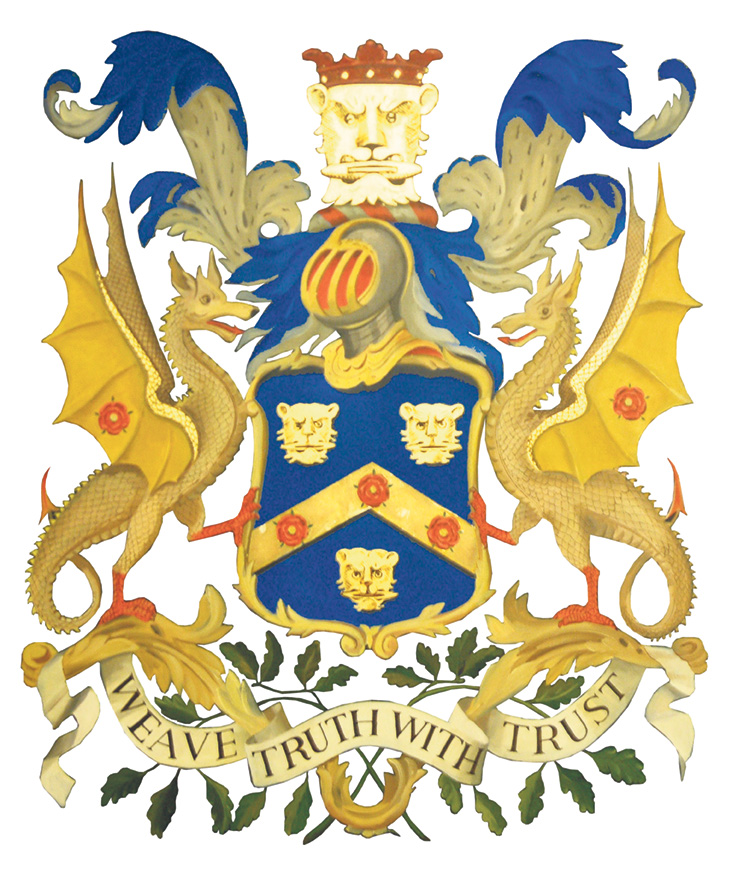1130 WEAVERS’ GUILD RECORDED IN PIPE ROLL OF HENRY I
1155 ROYAL CHARTER GRANTED TO THE WEAVERS’ BY HENRY II
1170 ASSASSINATION OF THOMAS BECKET
1189 1ST LORD MAYOR OF LONDON

1130 WEAVERS’ GUILD RECORDED IN PIPE ROLL OF HENRY I
1155 ROYAL CHARTER GRANTED TO THE WEAVERS’ BY HENRY II
1170 ASSASSINATION OF THOMAS BECKET
1189 1ST LORD MAYOR OF LONDON
The Anglo Saxon word “gild” meant “payment” and the members’ subscriptions raised funds which could be used for social, charitable and trade purposes. One important use of the funds was to make a contribution to the Exchequer in return for which a charter confirming certain privileges, rights or liberties would be granted by the King. It is the recording of such a payment, the first for any guild, which establishes the Weavers as London’s oldest Company. Before London Bridge was begun (1176), before the first Mayor, Henry FitzAilwyn, took office (1189), the Pipe Roll of 1130 has an entry of a payment of £16 by Robert Levestan on the Weavers’ behalf. The Pipe Roll was a roll of parchment on which payments into the Exchequer were noted.
Twenty‑five years later the Weavers’ Guild was granted a formal Royal Charter by Henry II which stated “Know that I have conceded to the Weavers of London to hold their gild in London with all the liberties and customs which they had in the time of King Henry my grandfather”. These liberties and customs included the rights to elect Bailiffs, supervise the work of their craft, punish defaulters and collect the ferm (tax). By the mid‑twelfth century the Weavers’ Guild had established a monopoly of its craft in London and control of its members through its own Court.

Copyright © 2025 The Weavers' Company. All Rights Reserved.